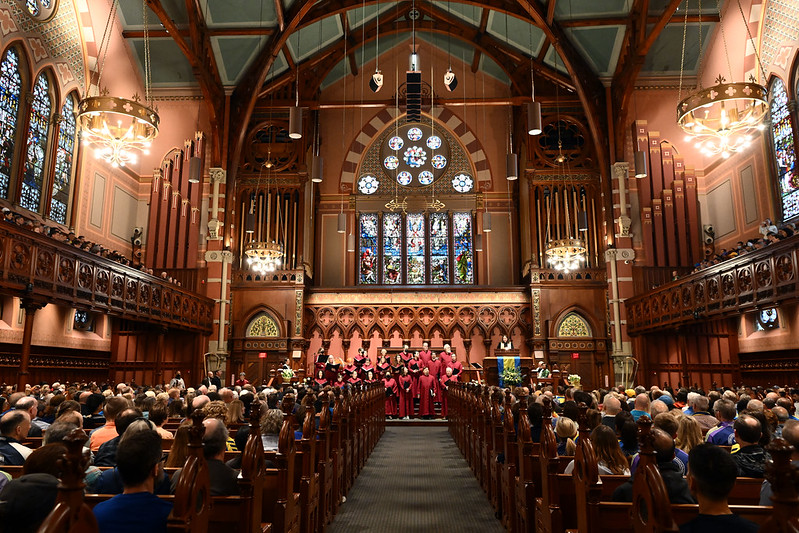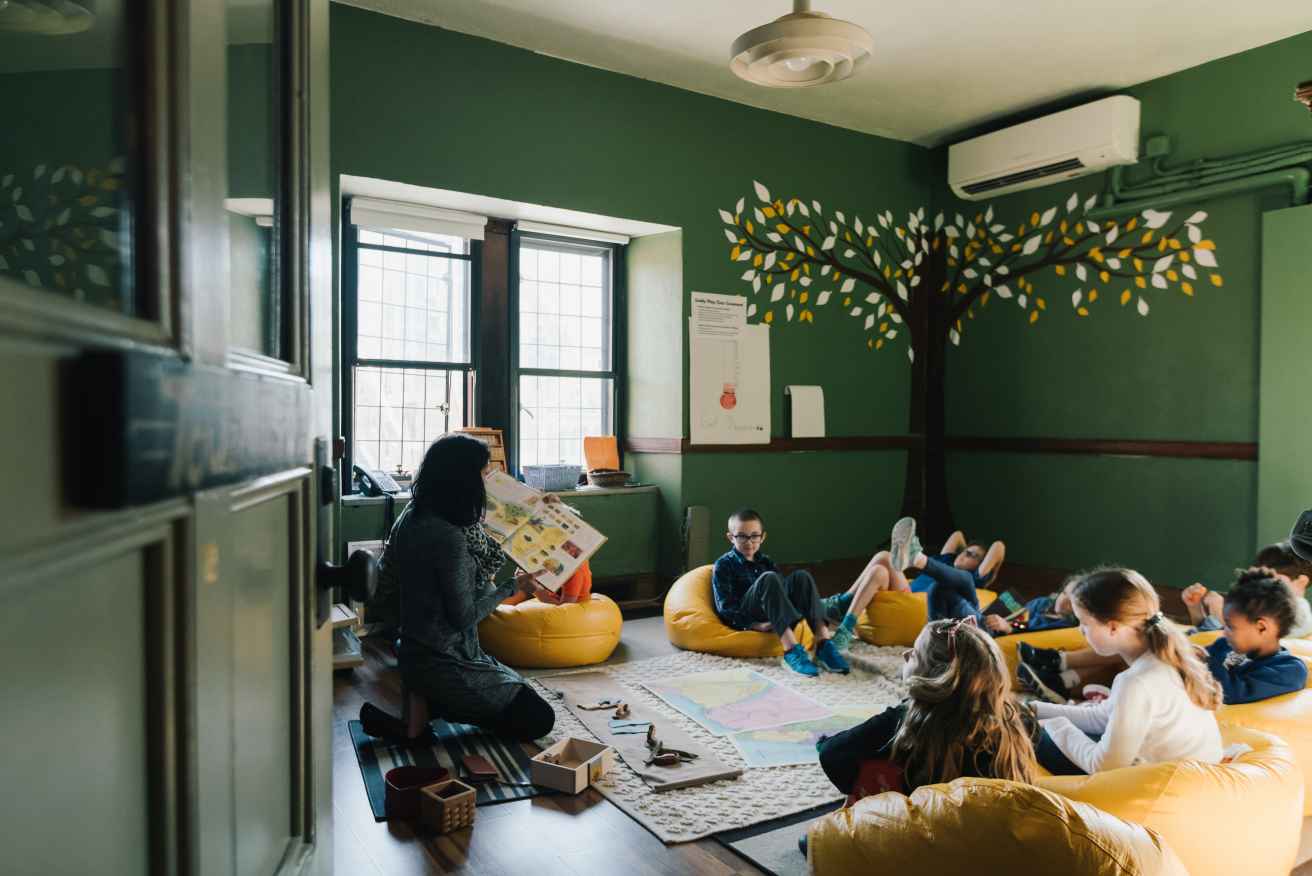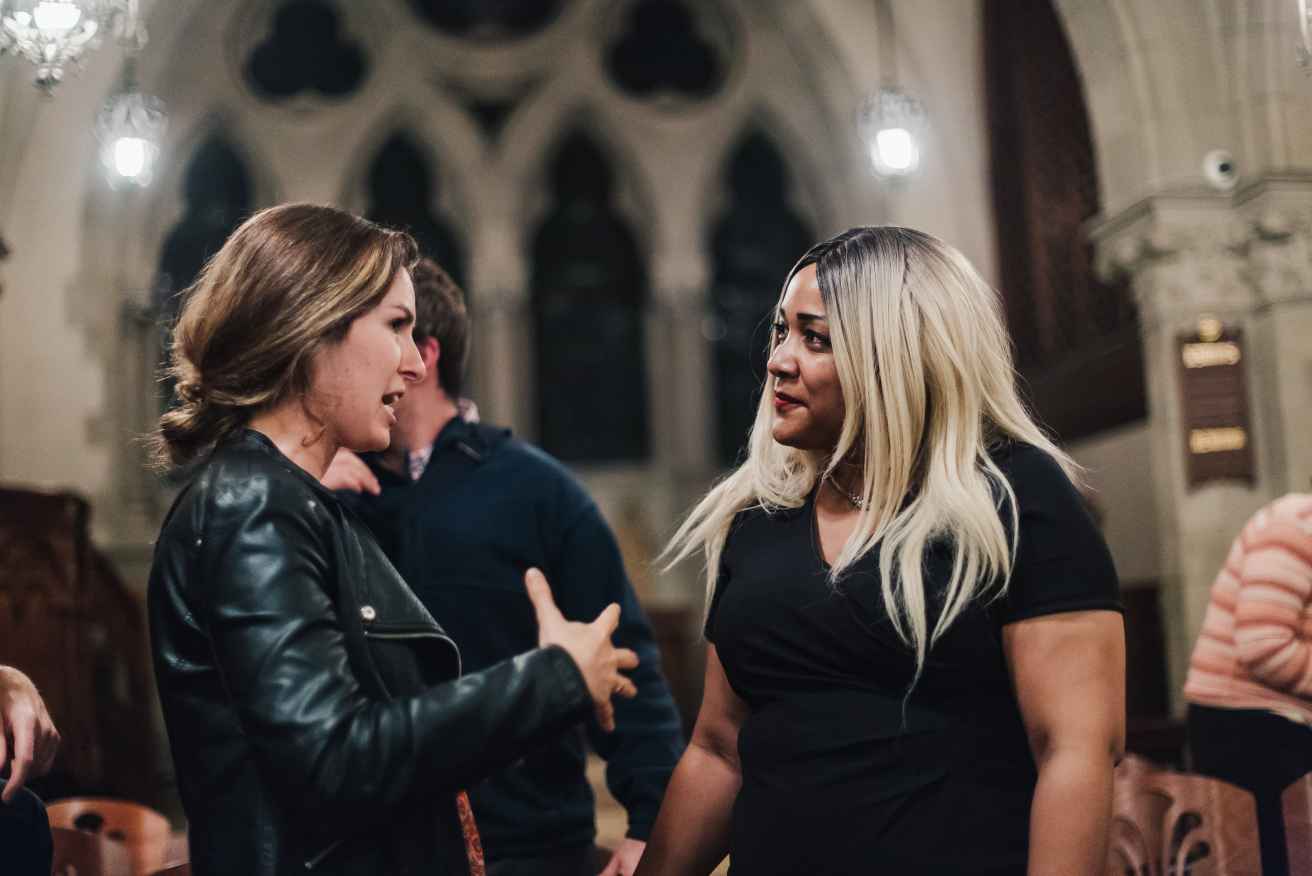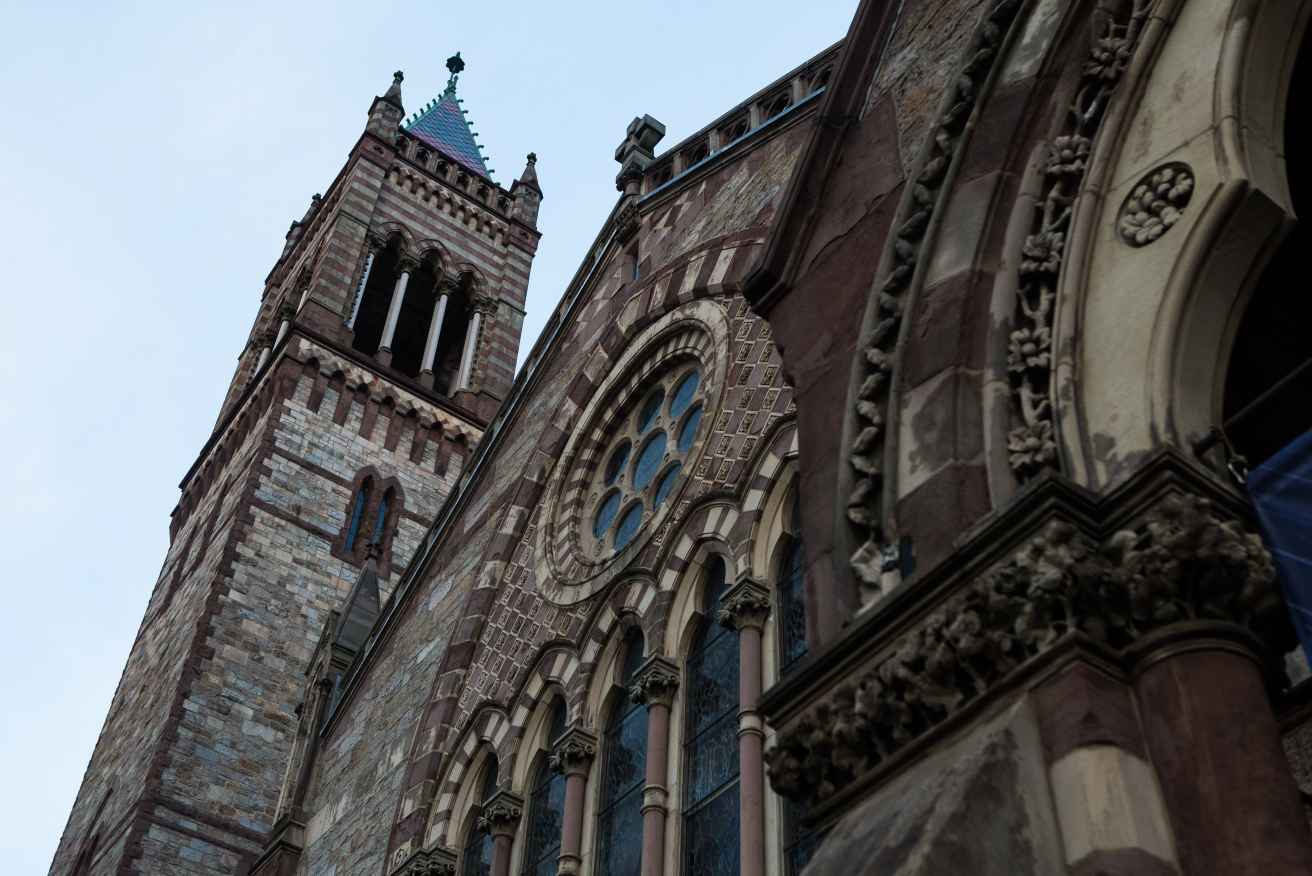Festival Worship - First Sunday after Epiphany
Festival Worship - First Sunday after Epiphany
Cradled
Transcript
Part 1: Stars
Mooselacmeguntic is a big lake in northwest Maine. Every summer now for the last six years, we have packed canoes with food and tents and paddled out with another family to an island campsite. It is always a magical 4 days. Roasting marshmallows, reading aloud to each other, building fairy houses, swimming naked in the cold fresh water. Our son Amos just turned 12. Their kids – Jonas and Maya – are 10 and 12. All three say it’s their favorite week of the year. Even when it rains cats and dogs and we just sit under a tarp playing cards or coloring. Device free, totally unplugged. At least one night is always perfect – crystal clear, still. After the kids are in their sleeping bags, we grown-ups get in canoes and head out into the water. With strategic use of yoga mats and life jackets, it is possible to lie quite comfortably in a canoe. The goal is to let your body relax back and rock gently on the water and let your gaze float you up into that magnificent night sky.
Initially, I find myself trying to remember the things I know. I look for constellations, I recall the order of the planets, the names of Jupiter’s moons. I think about numbers – how old are these stars, how far away, what exactly does it mean to say “the speed of light”? I remember an Omnimax movie we saw at the Smithsonian several years ago with images from the Hubble telescope – the brilliant beauty of a baby star swirling into being, the dizzy dawning of awareness as the camera took us to the edge of our galaxy and then retreated allowing our galaxy to become a single point of light in a sea of twinkling light where each light was another galaxy.
But eventually, my mind quiets and I just feel it. The peace of being held by the water, the awe of being infinitesamally small in the vast universe, the joy of being connected to it all.
I suppose the magi must have felt something like that. I imagine, when the dishes were done and the camels were down for the night, they must have unfurled their bedrolls around the fire and lay on the sandy ground – looking up at the night sky, feeling themselves held by the hand of God.
That’s it, I think – that feeling, the night sky feeling and the pursuit of the night sky feeling – that gets me out of bed in Roslindale on Sunday morning to come to church. That’s what empowers me to roust my family out of bed to come to church.
Left to my own devices, I become – in my own imagination – the absolute center of the universe. It might be the same for you, though it is socially reprehensible to admit. Every day, all week long, my own life looms large – my responsibilities, my to do list, my accomplishments, my failures, my worries, my family, my future, my past, my ideas, my moods, the crink in my neck. I don’t mean I always put my own needs first. I don’t help myself to the biggest brownie on the plate. I just mean that I inadvertently slip into the center of my own universe. And living that way – day after day -- makes me anxious at church, I effectively look up into the night sky and put myself in right relation to the whole.
I have been going to church more or less every Sunday now for 50 years. If I miss even one Sunday, I get a little off kilter. If I miss more than two Sundays in a row, I get way out of whack.
My first childhood church didn’t even have a name. We called ourselves 433 – some sort of number assigned to the congregation by Lutheran Church Central Headquarters. There was no building, we just met in people’s homes. We worshipped in a circle, sitting on the floor. We sang from mimeographed song sheets with guitars and random rhythm instruments. I remember how good it felt – as a 5 year old – to be invited to read Scripture in the service. I remember how it felt to tear a piece of crusty sourdough communion bread for the grownup next to me, and hold the pottery chalice to his lips. I knew that what we were doing was important to the grownups who were important to me – not just my parents, but all of my parents’ friends as well.
My family eventually moved to a more traditional church with pews and Sunday school rooms, but the spirit of 433 stuck with me. The idea that church is a community of people that comes together to share and receive one another’s gifts, to make music, to make sense of stories, to hold mystery. The institutional church has disappointed me sometimes, to be sure. Adolescence was painful. I remember wanting so much more than my church was able to offer. But I read a lot on my own, and I went to a private Christian high school where I got a pretty robust religious education. I did (incidentally) get an A+ on a particularly well-argued paper in my junior year of high school on the sinfulness of homosexuality.
I went off to college at a Lutheran school in southern Minnesota called St. Olaf. I was active in the student congregation there, but also attended weekly Quaker meetings in town. They felt a little like 433. After college, I moved around in search of vocation – community organizing, teaching, public health, Chicago, North Carolina, Baltimore. Always I found a congregation to commit to –a mainline Protestant church with progressive politics – Methodist, Presbyterian, Episcopalian. When I moved to Boston to go to medical school, I found a Lutheran Church in Harvard Square, which worked for me until I finally made peace with my sexuality and Alta came into my life. And then Amos. Together, we found Old South, which offered us the radical welcome we needed as a family.
In each chapter of my life, the church has been a sort of North Star – orienting and grounding me, helping me put myself and my choices in perspective, connecting me to my parents and grandparents and aunts and uncles and millions of other people of faith across time and place. Every Sunday morning – listening to ancient words, harmonizing with a hymnal, passing the peace, sipping coffee – I see the wide, majestic, pulsating night sky and remember my place in it all.
Part 2: Gifts
The story tells us that the magi brought gifts to the baby – gold and incense and some sort of perfume. The fact of their visit and their surprising devotion was another gift of sorts. And they used their gifts as star scholars to find their way to Mary and the baby.
Communities of faith like Old South are gift economies. As members, we don’t pay dues or buy tickets to worship or contract for pastoral care. We choose to put financial gifts in the offering plate. When gift economies like faith communities really work, they work because they invite us all to recognize and give our gifts. Peter Block and John McKnight wrote a book I love called Abundant Community. Though their language is secular, they describe what sounds to me like the kingdom of God – where relationships move from transaction to trust and kindnesses bind people together.
They encourage us to think about three kinds of gifts: Head gifts – what do you know? Heart gifts – what do you love or feel passionate about? Hand gifts – what skills do you have? What, they ask, might you be willing and able to teach?
The abundant community is one that recognizes and invites people to give their gifts. Six years ago, shortly after we arrived at Old South, Nancy invited me to serve on the Christian Formation Task Force. The Task Force was charged with thinking outside the box to nurture spiritual growth and discipleship at Old South – and we did! We rearranged the Sunday morning schedule to make space for new learning opportunities for people of all ages in the 10 am hour and brought Godly Play to our kids. We launched an annual all-church retreat. This year, we started a small group ministry program because we have a hunch that spiritual growth usually happens in the context of the sort of relationships that require more time and continuity than 45 minutes on Sunday morning permits.
Nancy asked me to share why I give my gifts to Old South in this way. Why I invest my time as a volunteer leader. I don’t know really. I think it is probably because I was asked. Yesterday, we had a Christian Formation Committee meeting. We met in the home of one of our members, Kathleen Simone. She fed us a lovely breakfast with homemade bread and homemade cranberry jam. She led us in an opening devotion by telling us the parable of the sower – Godly Play style – with little wooden figures on a piece of rich brown flannel. It is deeply satisfying to sow seeds at this church. There is good soil. And my fellow fieldhands are excellent companions.
Part 3: Empire
I can’t help noticing – in our magi story today – the context of empire in which the story unfolds. Herod saw this Bethlehem baby with his own star and these distinguished gift-bearing foreigners as a threat. Maybe Herod is just paranoid. But maybe he’s right. Maybe this baby and the people who seek him out are powerful.
I have been thinking a lot recently about how to live in the context of empire. Maybe I’m just paranoid, but it feels right now like our democracy and some of the values I hold dear are under threat. Might going to and giving to church help?
I think so. Giving to church is not like giving to support a cause. Nancy wanted me to be explicit about money. We give about 6% of our take home monthly income to Old South. Giving to church is not like giving to public radio or 350.org or even Project Hope in Dorchester. Giving to church is a spiritual practice. We give to church not to pay the pastor’s salary or the electricity bill but to unleash in ourselves and others a flow of giving and receiving that connects us to one another and creates abundance. We give with the radical, counterculture hope that if we could truly share ourselves with one another we might see that together we already have everything we need. I don’t know if it really works that way, but that’s what I’m going for.
Maybe that kind of power really can – in the best way – shake up the empire. Maybe, when we join hands and look up at the night sky – as we worship together on Sunday morning – the God who flung the stars really does course through our bodies like electricity and – as Nancy likes to say – set our hearts on fire.







